Husband and Wife Scale the Pillars of Hercules
Story by Michael Seguin
Photography by Pam and Bill Seney
Some places capture our imagination. Some places are so jaw-dropping, so awe-inspiring, that they demand an explanation.
And so, countless writers have tried.
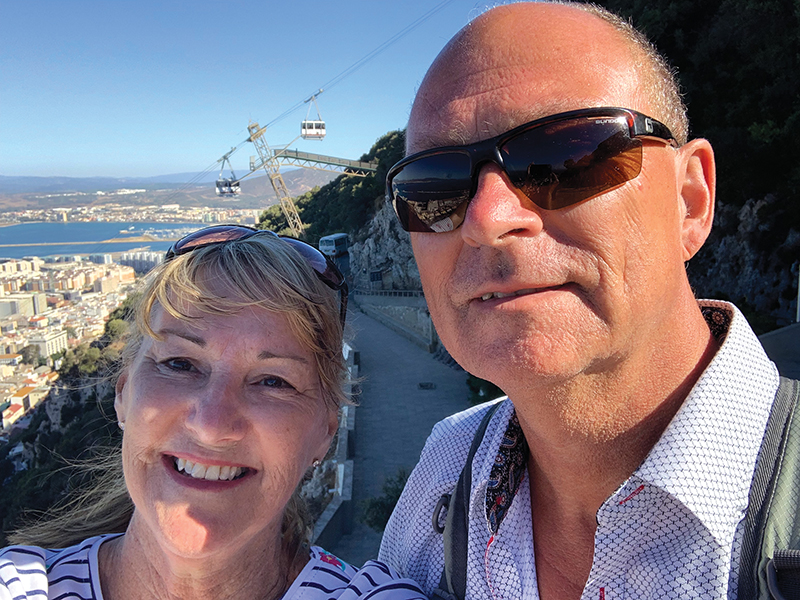
In Greek mythology, Hercules once angered the gods. As punishment, he was condemned to perform his iconic Twelve Labours. The tasks were incredibly dangerous, intended to test the worth of the mortal world’s greatest hero. They involved slaying murderous beasts, such as the man-eating Nemean lion, the poisonous Lernaean Hydra and the winged Stymphalian Birds.
And, for the tenth Labour, Hercules was ordered to steal the Cattle of Greyon. In order to do so, he had to pass beyond charted lands and into the unmapped unknown.
Accounts vary on how exactly Hercules made this journey. One source claims that he shot an arrow at the Sun, stole a god’s chariot and flew across a desert. But, according to some Roman writers, rather than going through the trouble of climbing a mountain, the impatient demigod simply lifted his club and smashed through it.
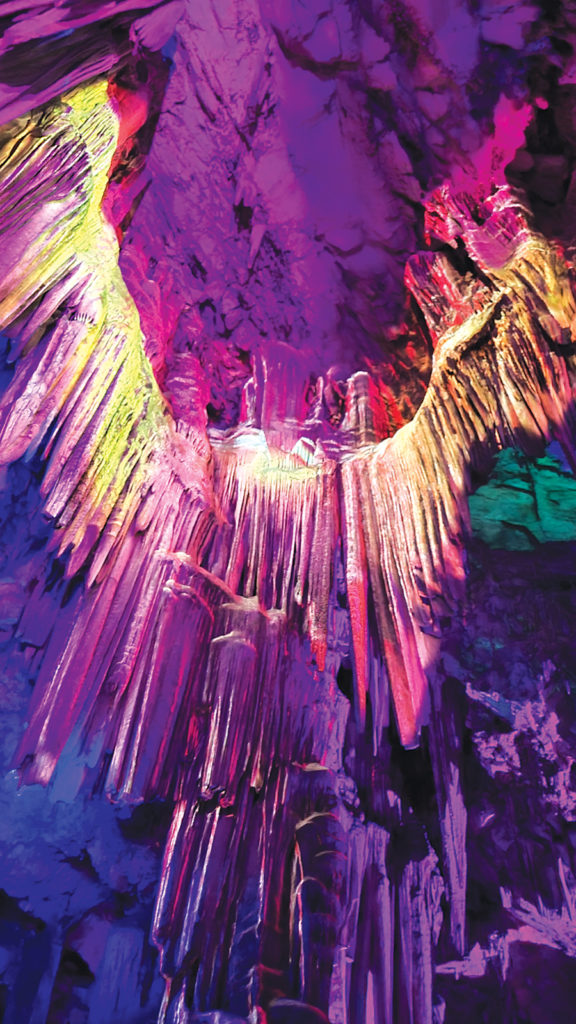
In doing so, he connected part of the Atlantic Ocean and the Mediterranean Sea—and formed the Rock of Gibraltar, which was later identified as one of the two Pillars of Hercules.
This might all sound a little farfetched, even by the standards of Greek mythology. But when you stand along the coast of the island and stare up at that monolithic slab of limestone, you can’t help but believe that something magical had a hand in creating it.
This is something Pam and Bill Seney discovered for themselves when they took a trip to the island last September.
The Seneys are veritable globetrotters. “Seeing the world is our passion,” Pam explains. “When we go somewhere, we try to do as much as we can and go, go, go! We try to cram as much experience as we can into each day.”
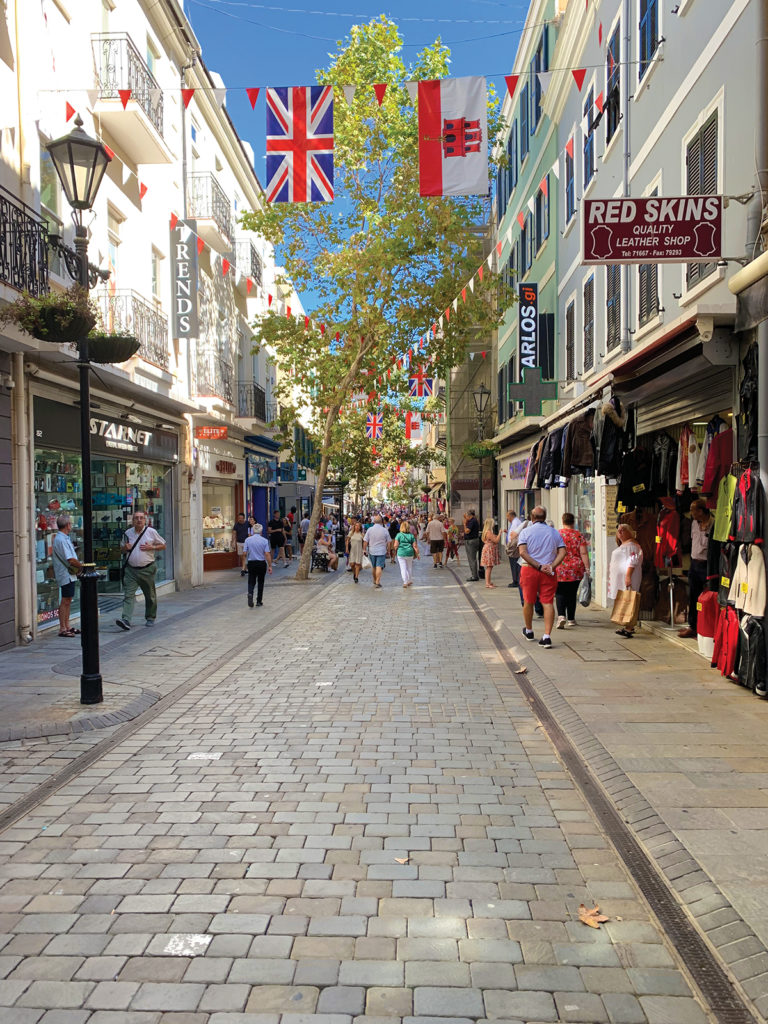
Fortunately, Gibraltar presented the Seneys with countless experiences. The Rock of Gibraltar itself was foremost among them.
“The Rock of Gibraltar looms over the whole island,” Bill states. “When you stand on top of it, you can see Morocco in the distance.”
And as magnificent as the Rock of Gibraltar is from its summit, what’s inside might be even more amazing.
“Inside the mountain is St. Michael’s Cave,” Bill explains. “It’s an absolute must-see. It’s a huge, gorgeous cave. They splash different coloured lights against the wall. It brings out such a different view of everything. One in particular looks like a pair of angel’s wings.”
The largest of the chambers, dubbed the Cathedral Cave, is used as an auditorium. It comes equipped with a concrete stage and enough space for over 100 guests.
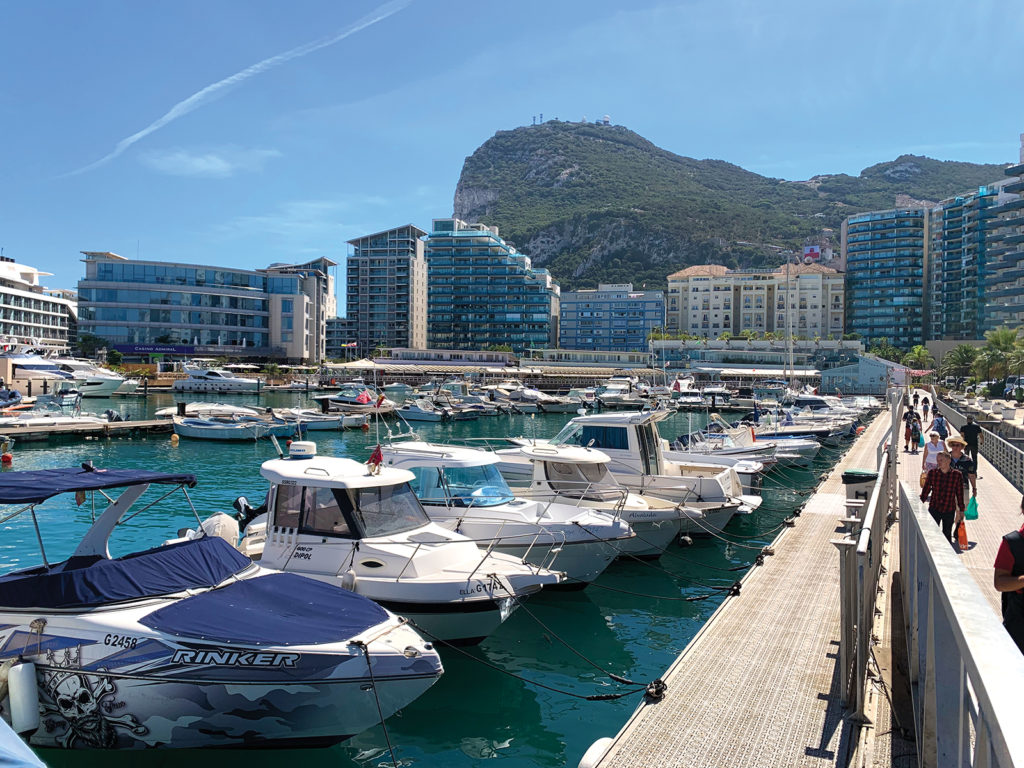
“They use it for concerts, plays—everything,” Bill explains. “It’s a major destination on the island. The acoustics in there are incredible. If you so much as speak in there, you can hear how far your voice carries.”
And, in keeping with the imagination of early Greek storytellers, the dimensions of the cave were so vast that some believed it to the Gates of Hades—the entrance to the Underworld.
“It took us an hour to get through the cave,” Pam states. “And we only went through the smaller corridors. But these caves stretch through the whole Rock of Gibraltar. And the history there is written into everything. During World War II, the caves were used as a hospital. Soldiers dug tunnels and lookout points. There are even canons still down there. You could spend days charting it all out.”
But if tunnels aren’t your forte, there’s plenty to do under the open sky.
“There’s a lot of marinas there,” Bill explains. “The whole island is surrounded by the Mediterranean Sea. It’s a major destination point. A lot of people stop there with their boat. It’s a port city! There are seven beaches.”
That said, sometimes Gibraltar receives other visitors.
“The dolphins all go there to breed!” Pam states. “We took an excursion in the bay and saw all the common and stripped dolphins. They were everywhere! There were hundreds and hundreds of them! They would swim right up to you and play with the boat. They’d race alongside you, jump around. It was incredible.”
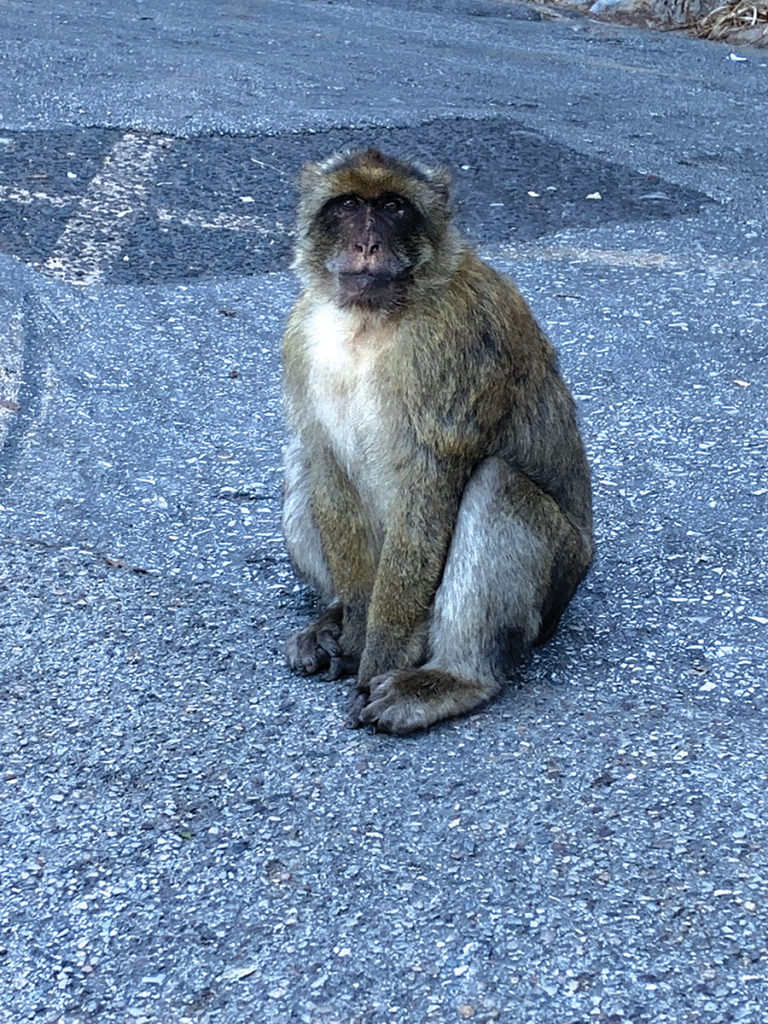
“If you love water, then this is a great destination for you,” Bill explains. “There’s all kinds of fishing and wildlife viewing. And you can even tour the island!”
The island is quite a spectacle itself. And, as Bill and Pam learned, extremely welcoming.
“The whole town had a very European feel,” Bill states. “Everyone spoke English primarily, with some Spanish. There’s all kinds of sidewalk cafes, restaurants and boutiques.”
“They have all these cobblestone streets,” Pam explains. “It’s all very quaint and beautiful.”
As well, the island hummed with an energy that the two found intoxicating.
“Everyone is out!” Bill states. “It’s not like here, where you go downtown and might see 10 people. Everyone is out. Everyone is smiling. Everyone is active.”
And while the locals were all active, none were quite as busy as some of the other guests.
“I have pages and pages of pictures of monkeys!” Pam laughs.
The upper part of the Rock of Gibraltar forms a nature reserve, which is home to the famous Barbary macaques—an endangered species of monkeys.
“The island is in the only place in Europe that has wild monkeys,” Bill explains. “But that’s a bit of a misnomer, as these monkeys are actually from the mountains of Morocco, about 14 kilometers away. So I guess that makes them tourists, too!”
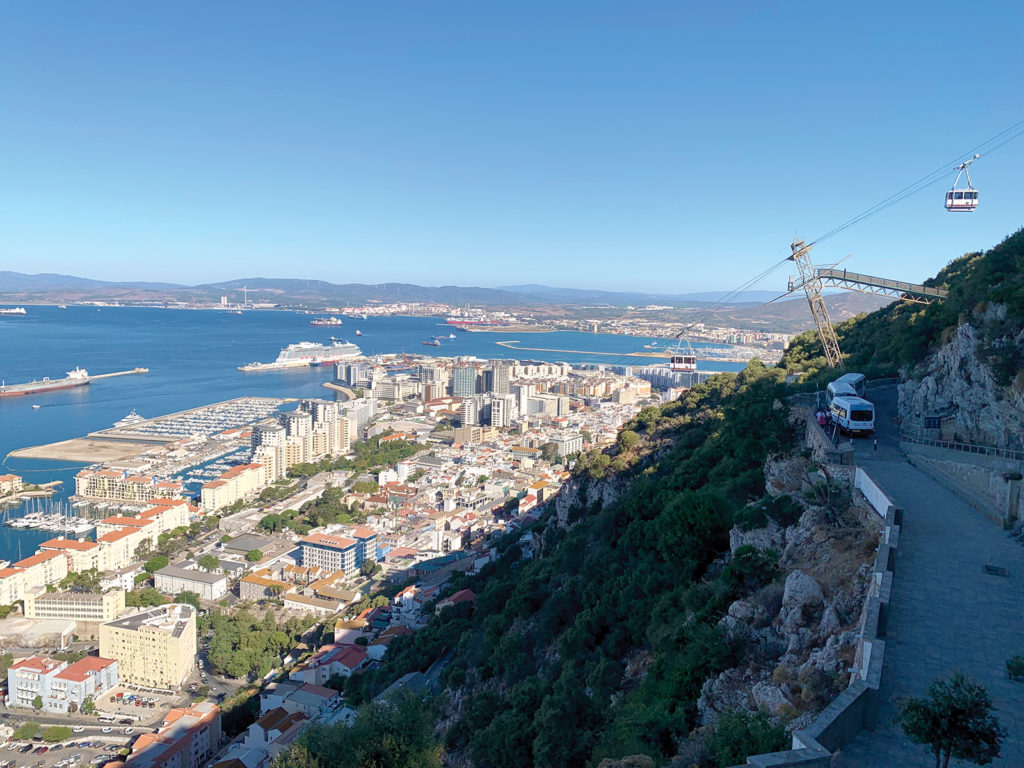
At any moment, Gibraltar is home to over 300 monkeys scattered across five troupes. And while most are well-behaved, locals caution visitors to keep a tight grip on their belongings.
“They’re not aggressive, but you don’t challenge them,” Bill states. “You’ve got to keep hold of your sunglasses. And if they see food, they’ll try and take it from you.”
“They’ll unzip your backpack pretty quick if they smell anything in there,” Pam explains. “They occupy the whole Rock of Gibraltar. Some people will take a taxi to the top of the mountain, and there will be monkeys all over the vehicles. They’re everywhere!”
Bill and Pam encourage anyone interested to make the trip and immerse themselves in the world under the shadow of the Rock of Gibraltar.
“You need to spend at least two to three days there,” Bill explains. “Embrace the culture. Go to the restaurants. Go deep-sea fishing. There’s a lot to do.”


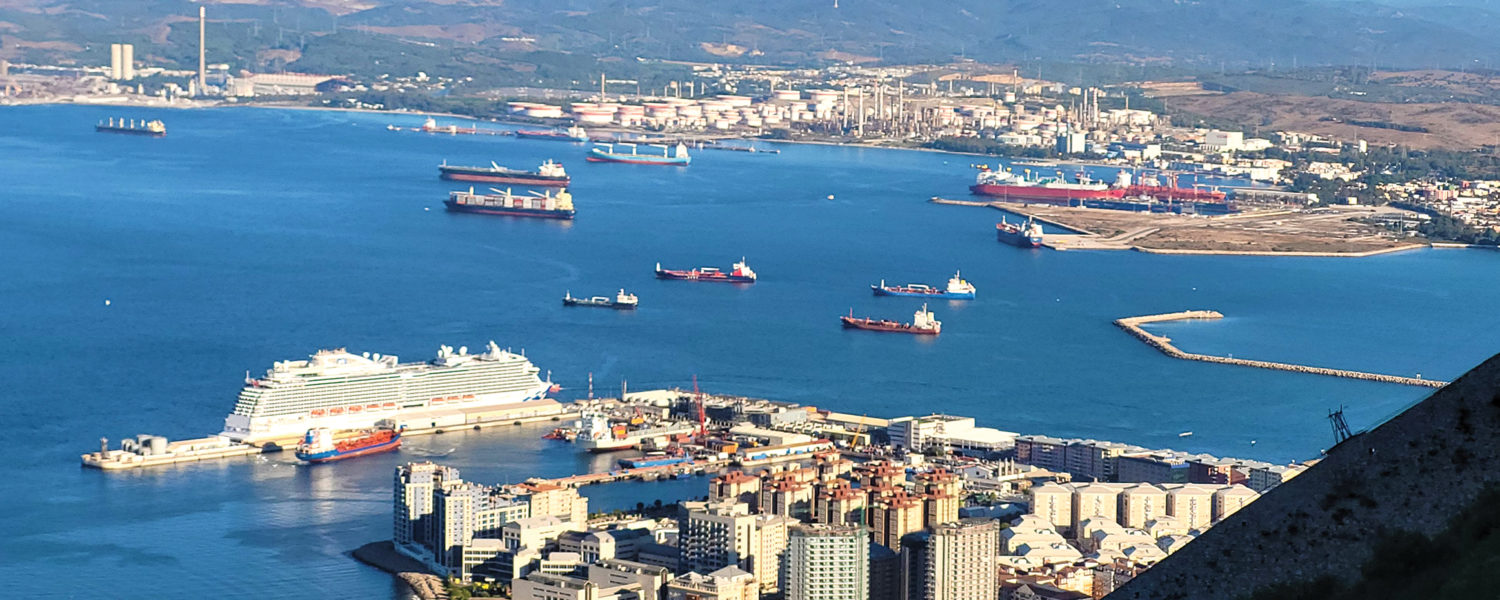

Add comment